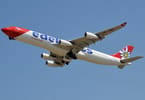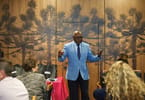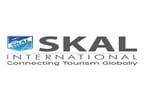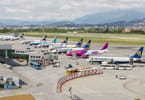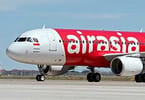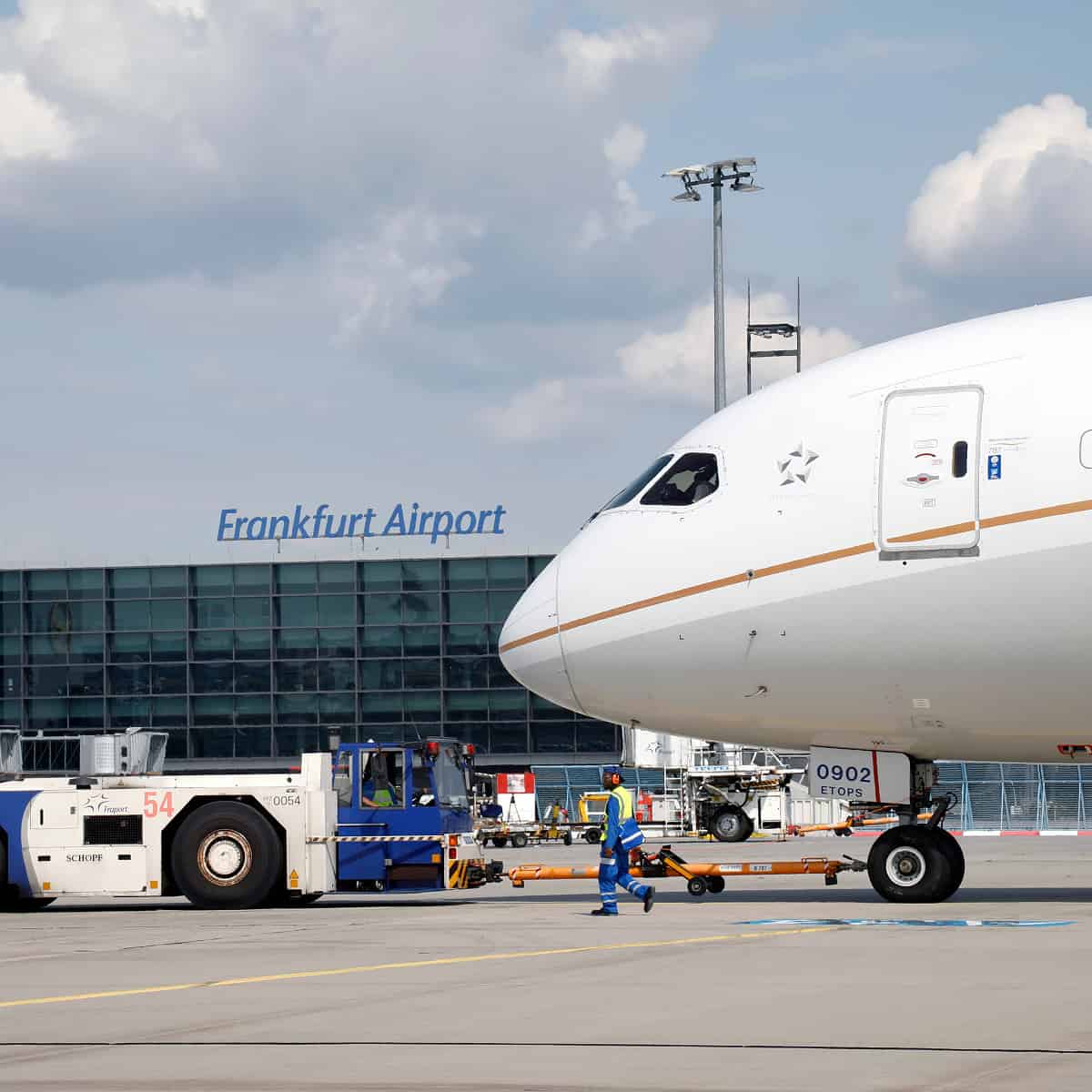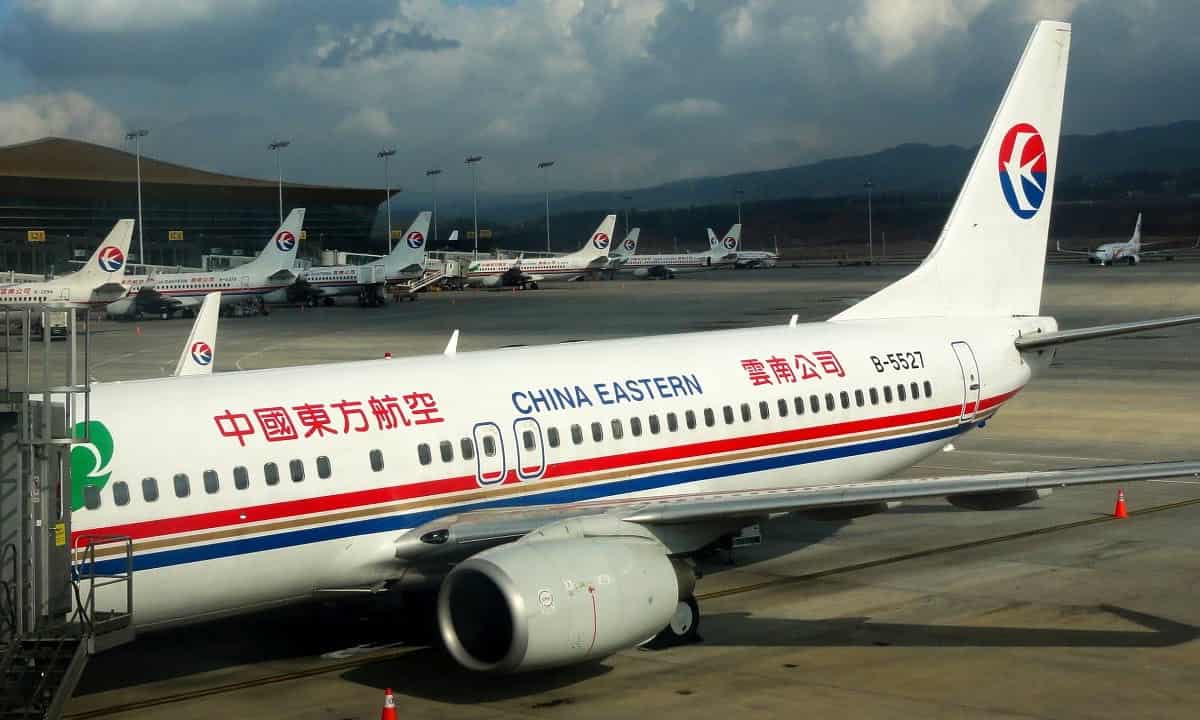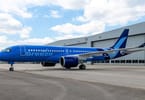A popular means of exploring large cities in the United States and elsewhere is participating in a “hop-on, hop-off” double-decker bus tour. In this week’s article we again discuss antitrust law and the travel industry [see “Best Price” or “Lowest Price” guarantees: What do these words really mean? (eTN (12/17/2014); Travel Law at 2.11] focusing on such concepts as relevant market, competitive effects and barriers to entry as they apply to New York City’s hop-on, hop-off bus tour market. Specifically, we will review the Court approved final judgment (and competitive impact statement) settling an antitrust lawsuit, United States of America and State of New York v. Twin America, LLC, et. al., Civil Action No. 12-cv-8989 (ALC)(GWG), S.D.N.Y. (Stipulation And Order Regarding Final Judgment signed by Judge Andrew L. Carter, Jr. on 3/18/2015); Competitive Impact Statement dated March 16, 2015).
Travel Law Update
Amtrak Train Derailment
In Stolberg, Mouawad & Fitzsimmons, Amtrak Train Derailed Going 106 M.P.H. on Sharp Curve; at Least 7 killed, nytimes.com (5/13/2015) it was noted that “An engineer jammed on the emergency brakes just seconds before Tuesday’s fatal Amtrak derailment, but the train-traveling at 106 miles an hour, more than twice the speed limit-slowed only slightly, federal authorities said, before hurtling off its tracks, killing at least seven people and injuring more than 200. Survivors who emerged battered and bloodied described a chaotic scene, with passengers thrown against walls, furniture and one another, and luggage and other items and falling on terrified riders”. In Passarella, Valuing Damages in Amtrak Crash Made Trickier by $200M Cap, law.com (5/14/2015) it was noted that “Lingering over the liability claims expected to be raised by victims of the Amtrak 188 derailment is a 1997 federal law that creates a $200 million damages cap to be paid out for any single railroad accident”. In Shear and Mouawad, Amtrak Says Shortfalls and Rules Delayed Its Safety System, nytimes.com (5/14/2015) it was noted “The Amtrak train that derailed in Philadelphia on Tuesday night was equipped with an automatic speed control system that officials say could have prevented the wreck, which killed eight passengers and injured hundreds. But the system, which was tantalizingly close to being operational, was delayed by budgetary shortfalls, technical hurdles and bureaucratic rules, officials said Thursday”.
Recreational Boating
In Foderaro, A Kayak Trip on the Hudson, Ending in Death and An Arrest, nytimes.com (5/12/2015) it was noted that “They seemed the picture of love, a handsome couple who doted on their cat, partied with friends at local pubs and paddled the Hudson River in kayaks…Then, on Sunday evening in April (Ms. X)…made a desperate 911 call from the river. The kayak her fiancé (Mr. Y) was in capsized and she could not find him in the cold water. He is presumed dead. Ten days later…the police arrested (Ms. X) and charged her with second-degree murder…But at the bail hearing…(Ms. Z) an assistant district attorney quoted (Ms. X)-in what sounded more like a confession-saying that she had tampered with (Mr. Y’s) kayak and that it had ‘felt good knowing he was going to die’”.
New Rules For Car-Hire Apps?
In Flegenheimer, Uber and Internet Giants Assail New York City’s Plan to Bolster Rules for Car-Hire Apps, nytimes.com (5/13/2015) it was noted that “At issue is a rule, proposed by the city’s Taxi and Limousine Commission, aimed at bolstering its regulation over the fledgling app market that has helped reshape the taxi industry. Under the proposal, smartphone app operators ‘must apply for approval of a modification’ for certain changes to any app used to arrange vehicle rides for hire. Opponents have said the proposal, which is scheduled to be discussed at a hearing in two weeks, could effectively grant the commission veto power over software updates, though the administration has disputed this characterization. ‘We are troubled by the substance of the draft, which appears to indicate a significant departure from this administration’s policy of encouraging innovation, one that risks undermining New York’s progress and status as a global leader’, reads a letter from the Internet Association, a lobbying and advocacy group in Washington”.
Helping Ride-Hailing Drivers
In Singer & Isaac, An App That Helps Drivers Earn the Most From Their Trips, nytimes.com (5/9/2015) it was noted that “When (Mr. A) began driving for Uber and Lyft…he concentrated on picking up passengers near his Walnut Creek neighborhood…‘At first I thought I was earning money’, says (Mr. A)…But then he signed up for SherpaShare, a free analytics site that helps ride-hailing drivers calculate their real incomes. He discovered that his net pay was much lower that the $20 an hour he had estimated…With SherpaShare, drivers can input their daily incomes, number of fares, working hours, expenses and mileage to obtain not only more concrete information on their net pay, but also insights into the driving patterns that are most profitable for them”.
Do Pilots Really Matter?
In Smith, Why Pilots Still Matter, nytimes.com (4/10/2015) it was noted that “In the two weeks since the crash of Germanwings Flight 9525, there has been no lack of commentary about the failures and future of piloted aviation-much of it is frustratingly ill informed. Planes are already so automated, consensus has it, that it’s only a matter of time before pilots are engineered out of the picture completely…True, these days pilots spend only a short amount of time with their hands on the control column or stick…Our hands might not be steering the airplane directly…but almost everything the airplane does is commanded, one way or the other, by the crew…On the 767 that I fly, there are multiple ways to set up and command any routine climb, descent or change of course. Meanwhile, more than 99 percent of landings and a full 100 percent of takeoffs, are performed manually”.
Airline Quality Rating 2015
In Bowen & Headley, Airline Quality Rating 2015, commons.erau.edu/aqrr/25 (4/13/2015) it was noted that “The overall industry AQR (Airline Quality Rating) score for 2014. Declines were seen in all of the four performance areas tracked. As an industry, the AQR criteria show that on-time arrival percentage was worse (76.2% in 2014 compared to 78.4% in 2013). Industry mishandled baggage rate was worse, increasing from 3.21 per 1,000 passengers in 2013 to 3.62 per 1,000 passengers in 2014. Involuntary denied boardings per passenger served by the industry worsened to 0.92 per 10,000 passengers in 2014 from 0.89 per 10,000 passengers in 2013. Consumer complaint rate across the industry rose to 1.38 per 10,000 passengers in 2014 from 1.13 per 100,000 passengers in 2013. Of the 11,364 complaints registered with DOT regarding all U.S. domestic carriers, 62.7% were for either flight problems, customer service problems r baggage problems…The return of the AQR score to a level seen five years ago does not send a positive message to consumers that see an industry enjoying positive economic times”.
Taxi Medallion Bailout?
In Barro, New York Taxi Mogul, Seeking a Bailout, Says He’s Too Big to Fail, nytimes.com (4/10/2015) it was noted that “One of New York City’s largest taxi fleet owners is asking for a bailout. (Mr. X) said in an interview Thursday that the taxi industry, like the financial industry, was too big to fail. He would like the city to guarantee taxi medallion loans, which would induce banks to extend more credit to fleet owners like him…Prices peaked in 2013, not just in New York but also in other large markers like Boston and Chicago. Prices have declined as taxis have faced competition from car service apps like Uber. At the top, the price for New York mini-fleet medallions, which may be owned by nondrivers, was over $1.2 million”.
Twin America Proposed Settlement Announced
As noted in US and NY Settle Antitrust Case Against Bus Companies, New York Law Journal, March 18, 2015 “Two double-decker tour bus companies accused of monopolizing the New York City market have reached an antitrust settlement that includes paying $7.5 million and giving up 50 bus stops in high-profile locations (including Times Square and the Empire State Building). Attorney General Eric Schneiderman and the U.S. Department of Justice said Coach USA, City Sights and their joint venture, Twin America, essentially controlled all of the most competitively meaningful bus stops for hop-on, hop-off tours and increased prices for riders by 10 percent since coming together in 2009. ‘By eliminating the competition between them, the largest operators of New York City’s iconic double-decker tour buses were able to raise prices and deprive city visitors of the benefits of a free and fair market’, Schneiderman said. Officials said since the companies had so many high-profile bus stops, it was difficult for others entering the market to get space in the same areas and compete…Coach USA spokesman…said the companies ‘have engaged constructively’ with federal and state officials and ‘we are pleased at the continuing progress towards an agreed settlement’”.
The Final Judgment
The Proposed Final Judgment (signed by the Judge Andrew L. Carter, Jr. on March 18, 2015) provides, inter alia, that defendants “have consented to the entry of this Final Judgment without trial or adjudication of any issue of fact or law, and without this Final Judgment constituting any evidence against or admission by any party regarding any issue of fact or law”.
Claims, Disgorgement, Divestitures
As set forth in the Proposed Final Judgment “The Complaint states a claim upon which relief may be granted against Defendants under Section 7 of the Clayton Act, as amended (15 U.S.C. 18), Section 1 of the Sherman Act (15 U.S.C. 1), Section 340 of the Donnelly Act (N.Y. Gen. Bus. Law 340) and Section 63(12) of the New York Executive Law (N.Y. Exec. Law 63(12)”. The Final Judgment requires that “Defendants shall pay $7.5 in disgorgement to Plaintiffs for Defendants’ alleged violations of the aforesaid federal and New York State statutes. The Final Judgment also requires “Defendants…by May 1, 2015, to divest the City Sights Bus Stop Authorizations by relinquishing them to the NYCDOT (New York City Department of Transportation)…the divestiture…shall include the entire City Sights Bus Stop Authorizations in the borough of Manhattan (but not those) granted to affiliates of Twin America other than City Sights, including any authorization for shared bus stops”.
Competitive Impact Statement
The Competitive Impact Statement dated March 16, 2015 (CIS) noted that “The formation of Twin America was not subject to the Hart-Scott-Rodino Antitrust Improvements Act of 1976, as amended, 15 U.S.C. 18a…which requires companies to notify and provide information to the Department of Justice and the Federal Trade Commission before consummating certain transactions. Neither the United States nor the State of New York was aware of the transaction until after it had been consummated. Upon leaning of the transaction, the Antitrust Bureau of the New York State Attorney General’s Office (NYSAG) opened an investigation and on July 31 and August 3, 2009, served subpoenas on defendants seeking information about Twin America’s formation?
The Relevant Market
The CIS described the relevant market as follows. “The evidence demonstrates that a significant number of customers would not substitute to other tours or attractions in response to a small but significant and non-transitory increase in the price (SSNIP) of hop-on, hop-off bus tours. These bus tours combine transportation and sightseeing into a unique product that is not reasonably interchangeable with other tours or attractions. In addition, to providing an informative and entertaining tour of New York City’s most popular attractions and neighborhoods, hop-on, hop-off bus tours provide customers with the ability to ‘hop off’ the bus to visit attractions of interest and ‘hop on’ a later bus to continue their long tour using the same ticket. As a result of this feature, customers are provided an affordable and reliable means to travel around New York City and the ability to customize their sightseeing itineraries to the attractions and neighborhoods that interest them. Defendants’ documents and business practices illustrate that they have long recognized hop-on, hop-off bus tours in New York City to be a distinct market and do not view other types of tours as a significant constraint…Defining a relevant antitrust market generally involves answering the question of whether a hypothetical monopolist would find it profitable to impose a SSNIP. The evidence that Coach and City Sights significantly increased prices as a result of the market power conferred by the joint venture directly answers this question…Hop-on, hop-off bus tours in New York City therefore constitute a relevant market and line of commerce under Section 7 of the Clayton Act, Section 1 of the Sherman Act and Section 340 of the Donnelly Act”.
Competitive Effects
“The formation of Twin America resulted in actual and immediate harm to consumers as it enabled Defendants in increase hop-on, hop-off bus tour prices by approximately 10 percent… In years prior to the joint venture, Coach and City Sights were each other’s main rival and consumers benefitted from the improved products and services that resulted from the fierce and direct competition between them. The head-to-head competition, which intensified overtime, was eliminated when Defendants merged their hop-on, hop-off bus tour operations…the formation of Twin America substantially increased concentration in an already highly concentrated market…The more concentrated a market, and the more a transaction would increase concentration in a market, the more likely it is that a transaction would result in a meaningful reduction in competition…The formation of Twin America created an effective monopoly with an approximately 99 percent market share”.
Barriers To Entry
“Entry and expansion into the relevant market has not been, and is not likely to be, timely or sufficient to counteract the joint venture’s anticompetitive effects. For more than three years following Twin America’s formation, there was no new entry or expansion in the New York City hop-on, hop-off bus tour market and Defendants sustained their early 2009 price increases. Entry that has occurred since 2012 has also failed to roll back Defendants’ price increases and has been insufficient to constrain Twin America’s exercise of market power. The most significant barrier to entry…is the requirement that an entrant obtain authorization from the New York City Department of Transportation (NYCDOT) for each location where it wished to stop to load and unload passengers on its tour. Both Gray Line and CitySights have long held large portfolios of bus stop authorizations… providing Defendants with a distinct competitive advantage over other operators in the market. Gray Line and City Sights obtained these bus stop authorizations without difficulty years before their joint venture because NYCDOT awarded the bus stops on a ‘first come, first served’ basis. Recent entrants, by contrast, have faced persistent difficulties securing bus stop authorizations at or sufficiently near key tourist attractions…Most of the stops sought by entrants-particularly those at or in close proximity to top tourist attractions-are now at capacity or are otherwise unavailable, leaving Twin America with the dominant share of competitively-meaningful stops”.
Conclusion
The CIS notes that “The proposed Final Judgment remedies the competitive harm alleged in the Complaint by requiring Twin America to relinquish to the NYCDOT the complete set of City Sights bus stop authorizations in Manhattan so that other firms are better positioned to obtain the bus stop authorizations needed to compete more effectively with Twin America”.
The author, Justice Dickerson, has been writing about Travel Law for 39 years including his annually updated law books, Travel Law, Law Journal Press (2015) and Litigating International Torts in U.S. Courts, Thomson Reuters WestLaw (2015), and over 350 legal articles.
This article may not be reproduced without the permission of Thomas A. Dickerson.
WHAT TO TAKE AWAY FROM THIS ARTICLE:
- ‘We are troubled by the substance of the draft, which appears to indicate a significant departure from this administration's policy of encouraging innovation, one that risks undermining New York's progress and status as a global leader', reads a letter from the Internet Association, a lobbying and advocacy group in Washington”.
- Com (5/12/2015) it was noted that “They seemed the picture of love, a handsome couple who doted on their cat, partied with friends at local pubs and paddled the Hudson River in kayaks…Then, on Sunday evening in April (Ms.
- Com (5/14/2015) it was noted that “Lingering over the liability claims expected to be raised by victims of the Amtrak 188 derailment is a 1997 federal law that creates a $200 million damages cap to be paid out for any single railroad accident”.




